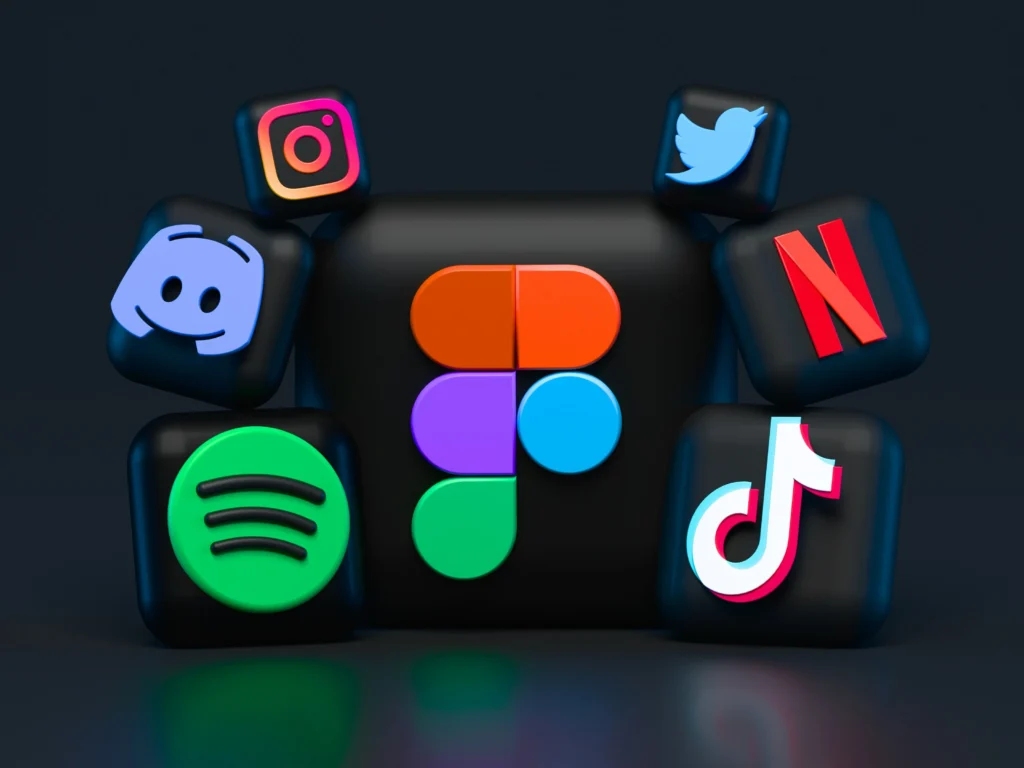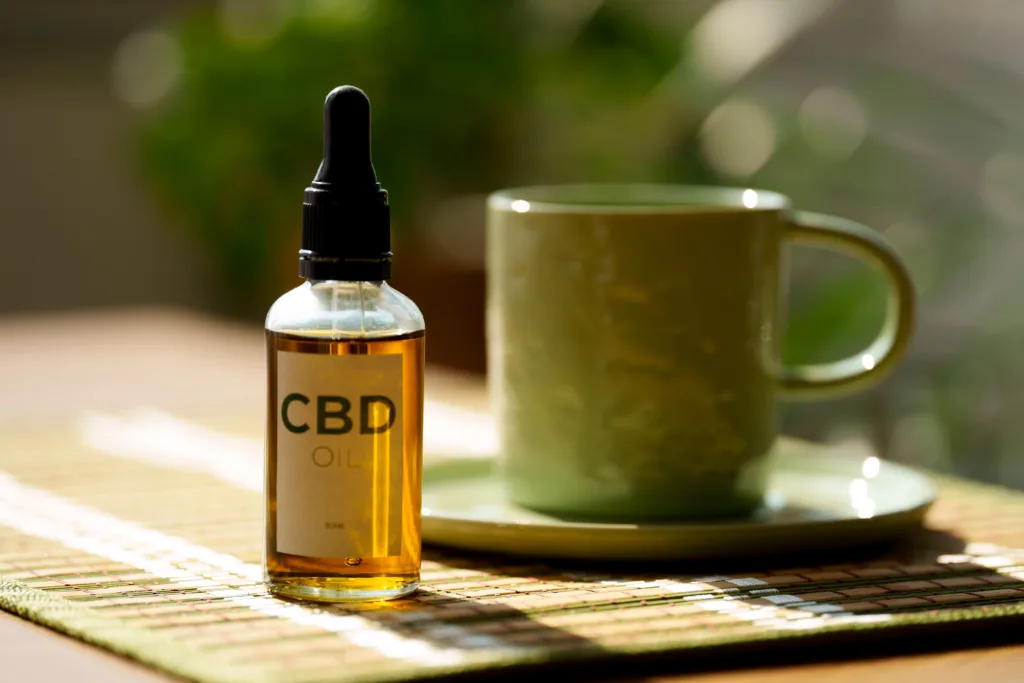You might be surprised to learn that nearly 30% of adolescents who use social media report experiencing body image concerns, a factor closely linked to the development of eating disorders.
The relationship between media consumption and mental health is complex, but research suggests that constant exposure to idealized body types can negatively impact your self-esteem and body image.
As you navigate the digital landscape, it’s essential to understand how platforms like Instagram, TikTok, and Snapchat influence your perception of yourself and potentially contribute to disordered eating behaviors.
Key Takeaways
- Exposure to idealized body images on social media can affect your body satisfaction.
- The link between social media use and the development of eating disorders is supported by scientific evidence.
- Understanding the psychological impact of media on mental health is crucial.
- Adolescents and young adults are particularly vulnerable to the negative effects of social media on body image.
- Developing a healthier relationship with social media can help protect your mental health.
The Rising Concern of Eating Disorders in the Digital Age
As social media continues to permeate daily life, a disturbing trend has emerged: the increasing incidence of eating disorders in younger demographics. The digital landscape is playing a significant role in shaping the behaviors and perceptions of adolescents, who are among the most avid users of social media platforms.
The prevalence of eating disorders is a critical concern that warrants attention. Current statistics indicate a troubling trend.
Current Prevalence Statistics
Research indicates that eating disorders are a significant public health concern. The prevalence of these conditions among adolescents and young individuals is particularly alarming. Studies have shown that the exposure to idealized body images and the constant comparison on social media can have detrimental effects on the mental health of youth.
- Eating disorders are increasingly common among younger populations.
- The median age of onset for certain eating disorders has decreased.
- Social media exposure is linked to body dissatisfaction and disordered eating behaviors.
The Shift in Onset Age
The onset age of eating disorders such as Anorexia Nervosa (AN), Bulimia Nervosa (BN), and Binge Eating Disorder (BED) has shifted dramatically. Previously, these conditions typically emerged in mid to late adolescence. However, the median age is now around 12 years, indicating a concerning trend towards earlier manifestation.
This shift highlights the need for early intervention and prevention strategies targeting younger populations.
Understanding Eating Disorders and Social Media
As you explore the digital landscape, it’s crucial to understand how social media interacts with eating disorders. The prevalence of social media use among adolescents and youth has been on the rise, and this trend has significant implications for their mental and physical health.
Types of Eating Disorders
Eating disorders encompass a range of psychological conditions characterized by abnormal eating habits. These include anorexia nervosa, bulimia nervosa, and binge eating disorder. Each of these conditions has distinct characteristics and can have severe health consequences. Understanding these disorders is crucial for addressing the role that media use and social media platforms play in their development and perpetuation.
Social Media Usage Among Adolescents
The statistics on social media use among adolescents are striking. Over 90% of adolescents have at least one social media account, and their presence on these platforms continues to grow. In the United States, a significant majority (93%) of youth aged 14-22 use social media platforms like Snapchat, Instagram, Facebook, and TikTok, with 81% using these platforms daily. The COVID-19 pandemic has accelerated this trend, embedding social media deeper into the daily routines of young people. As a result, adolescents are increasingly exposed to content that may influence their body image and eating behaviors.
- Adolescents spend increasing amounts of time on social media, with many reporting 3-4 hours of daily use.
- The constant exposure to curated and often unrealistic content can affect their perception of body image.
- This heightened exposure is particularly concerning during adolescence, a developmentally sensitive period.
How Social Media Shapes Body Image Ideals
The way you perceive your body is increasingly influenced by the content you see on social media. This influence is not just about the quantity of content but also its quality and the ideals it promotes.
Evolution of Beauty Standards Online
Over time, beauty standards on social media have evolved, reflecting and shaping cultural attitudes toward body image and beauty. Studies have shown that models and influencers have become progressively thinner or more muscular, depending on gender, over the decades. For instance, a study on male centerfold models in Playgirl magazine from 1973 to 1997 found that these models became significantly more muscular. Similarly, research on popular magazines for adolescent girls between 1970 and 1990 revealed an increased emphasis on fitness and a trend toward more androgynous-looking body shapes.
This evolution indicates a shift in cultural beauty standards, with media playing a crucial role in defining what is considered beautiful or ideal, affecting how you perceive your size and shape.
The “Perfect Body” Phenomenon
The “perfect body” phenomenon on social media presents an idealized and often digitally altered version of human bodies that’s virtually impossible to achieve naturally. You’re constantly exposed to images that have been manipulated through filters, editing apps, and even plastic surgery, yet are presented as authentic and attainable. For women, this typically means an impossibly thin yet curvy figure. This creates a distorted perception of what normal, healthy bodies look like, leading to body dissatisfaction when you compare yourself to these unrealistic standards.
Research indicates that adolescents are particularly vulnerable to this phenomenon, with many willing to engage in dangerous weight-loss or muscle-building practices in pursuit of these idealized body types, striving for the perfect body.
The Psychological Impact of Social Media Exposure
The constant exposure to curated content on social media platforms can have profound psychological effects on individuals, particularly during adolescence. This exposure can influence how individuals perceive themselves and their bodies, potentially leading to issues such as body dissatisfaction and self-objectification.
Body Dissatisfaction and Comparison
Social media platforms showcase the highlight reels of other people’s lives, often presenting unrealistic beauty and fitness standards. This can foster an environment where individuals, especially adolescents, compare themselves unfavorably to others. Such comparisons can lead to body dissatisfaction, as individuals feel they do not measure up to the ideals presented online.
- You may start to view your body as inadequate compared to the images you see online.
- This can result in a negative self-image and lower self-esteem.
- Constant comparison can also lead to a distorted view of reality, where you perceive others as having perfect lives or bodies.
Self-Objectification and Identity Formation
Exposure to social media can also lead to self-objectification, where you begin to view yourself primarily as an object to be evaluated based on appearance. This is particularly concerning during adolescence, a critical period for identity formation. When you focus excessively on your appearance, it can disrupt healthy identity development and lead to defining your worth primarily through external validation.
| Psychological Impact | Effects on Adolescents |
|---|---|
| Body Dissatisfaction | Negative self-image, lower self-esteem |
| Self-Objectification | Disrupted identity formation, external validation |
Understanding these psychological impacts is crucial for mitigating the potential negative effects of social media on adolescents. By being aware of these issues, you can take steps to protect your mental health and foster a positive online environment.
Visual Platforms and Their Influence
Social media platforms, particularly those with a strong visual focus, play a significant role in influencing body image ideals. The way individuals perceive their bodies can be significantly affected by the content they consume on these platforms.
Instagram and TikTok: The Most Influential Platforms
Instagram and TikTok are among the most influential visual-centric social media platforms. With their emphasis on images and videos, they have become breeding grounds for content that can either promote healthy body image or trigger body dissatisfaction. Exposure to curated and often unrealistic content on these platforms can lead to unhealthy comparisons and a distorted view of reality.
For instance, a study comparing the effects of Instagram and TikTok on body image concerns found that both platforms can have a significant impact due to their visual nature and the type of content they host.
| Platform | Primary Content Type | Potential Impact on Body Image |
|---|---|---|
| Static Images, Stories | Promotes beauty and fitness ideals | |
| TikTok | Short Videos | Can normalize certain body types or behaviors |
Content Types That Trigger Body Image Concerns
Certain types of content on these platforms are particularly likely to trigger body image concerns and disordered eating behaviors. “Thinspiration” and “fitspiration” content, for example, promote extreme thinness or fitness as aesthetic goals, potentially glorifying unhealthy behaviors.
- Before-and-after transformation posts can reinforce the idea that weight loss is always positive.
- Highly edited and filtered images create unrealistic standards.
- Food challenge videos and extreme diet content can normalize disordered eating behaviors.
Being aware of these content types and their potential impact on body image and eating disorders is crucial for mitigating their negative effects.
Gender Differences in Social Media’s Impact
Research indicates that boys and girls face different challenges on social media, particularly regarding body image and eating disorders. While both genders are exposed to unrealistic beauty standards online, the nature of the pressure and the resulting behaviors can vary significantly.
How Girls Experience Social Media
Girls are often subjected to the pressure of achieving an unrealistically thin body ideal, perpetuated by images and videos on platforms like Instagram and TikTok. This can lead to body dissatisfaction and disordered eating behaviors. The constant exposure to idealized female beauty standards can make girls feel inadequate about their own bodies, fostering a negative self-image.
Studies have shown that girls are more likely to engage in comparison and self-objectification, further exacerbating body image concerns. The societal expectation of thinness as a beauty ideal is a significant factor in the development of eating disorders among girls.
How Boys Experience Social Media
Boys, on the other hand, face pressure to achieve a muscular and lean physique, driven by the portrayal of male ideals in media and on social media platforms. The desire to be bigger and stronger is a common theme among adolescent boys, with studies indicating that male models in media have become significantly more muscular over time.
Boys are more likely to engage with fitness and sports-related content, which, while potentially promoting positive physical activity, can also encourage muscle dysmorphia or the use of unhealthy supplements. Moreover, the stigma associated with body dissatisfaction or disordered eating among boys may lead to underreporting, making the true impact of social media on boys potentially more significant than reported.
The Tripartite Influence Model: How Media Affects Behavior
The tripartite influence model offers a comprehensive framework for understanding how media exposure affects your behavior, particularly in the context of eating disorders. This model posits that media influence is a significant factor in the development of body image concerns and disordered eating behaviors.
Internalization of Appearance Ideals
The internalization of appearance ideals is a critical process by which media influence translates into personal body image issues. When you internalize these ideals, you begin to believe that achieving certain beauty or fitness standards is essential for your happiness or social acceptance. This internalization can lead to body dissatisfaction as the gap between your perceived self and the idealized self grows. Research supports that this process is linked to increased body image concerns in both adolescent boys and girls.
Studies have shown that exposure to media pressures can result in the internalization of appearance ideals, which in turn can lead to negative self-comparison and body dissatisfaction. You may find yourself comparing your body to the idealized images presented in the media, leading to feelings of inadequacy.
From Media Pressure to Disordered Eating
The pathway from experiencing media pressure to developing disordered eating behaviors follows a predictable pattern. Initially, you may feel pressure to conform to certain appearance ideals presented through various media channels. This pressure can lead to the internalization of these ideals, resulting in body dissatisfaction and potentially triggering disordered eating behaviors as you attempt to bridge the gap between your real and idealized self.
Research confirms that this pathway is not just theoretical; studies have documented that social media use predicts subsequent increases in disordered eating, particularly among individuals who experience high levels of appearance pressure. Understanding this process is crucial for developing strategies to mitigate the negative effects of media on eating behaviors.
Dangerous Trends: “Thinspiration” and “Fitspiration”
The proliferation of ‘thinspiration’ and ‘fitspiration’ content on social media has sparked concerns about its impact on users’ mental health. These trends, often presented as inspirational or motivational, can perpetuate unhealthy body image ideals and disordered eating behaviors.
Pro-Ana and Pro-Mia Content
One of the most concerning aspects of ‘thinspiration’ is its association with pro-ana and pro-mia content, which promotes anorexia and bulimia as lifestyle choices rather than serious eating disorders. This type of content can be particularly harmful, as it normalizes and encourages disordered eating behaviors. Users may feel pressured to conform to unrealistic beauty standards, potentially exacerbating body dissatisfaction and negative self-image.
As stated by a
leading eating disorder specialist, “Pro-ana and pro-mia content is extremely dangerous, as it glamorizes illnesses that can have severe physical and psychological consequences.”
The Guise of Health and Fitness
‘Fitspiration’ content often masquerades as promoting health and fitness, but it frequently showcases unattainable body ideals. You’ll encounter restrictive eating plans labeled as “clean eating” or “detoxing,” which can actually promote disordered eating patterns. Exercise is presented as mandatory, with messages suggesting that missing workouts indicates laziness, potentially encouraging compulsive exercise behaviors.
The language of health and fitness provides social acceptability for behaviors that might otherwise be recognized as problematic. This makes it challenging for individuals to identify when their wellness pursuits have crossed into disordered territory, potentially leading to unhealthy eating behaviors and an excessive focus on weight.
The Body Positivity Movement: Help or Harm?
The rise of the body positivity movement reflects a growing desire to redefine beauty and promote inclusivity. This movement, which encourages acceptance and appreciation of all body types, has gained significant momentum on social media platforms.
Benefits of Body Positive Content
Body positive content has several benefits, including promoting self-acceptance and challenging traditional beauty standards. By celebrating diverse body shapes and sizes, this content helps to create a more inclusive definition of beauty. Research has shown that exposure to body positive content can enhance body satisfaction and reduce the risk of eating disorders. Furthermore, it provides a supportive community where individuals can share their experiences and find encouragement.
Limitations and Unintended Consequences
Despite its positive intentions, the body positivity movement has several limitations and potential unintended consequences. Critics argue that body positive content often remains focused on physical appearance, potentially reinforcing the idea that one’s body is central to their identity and worth. This continued focus on the body can lead to self-objectification, particularly in women, who are already vulnerable to societal pressures and beauty standards. Additionally, the commercialization of the body positivity movement has led to concerns that it is being co-opted by brands, sometimes promoting a narrow and exclusionary version of body positivity.
- The movement may inadvertently create new hierarchies of acceptability, celebrating certain non-conforming bodies while excluding others.
- The emphasis on individual body acceptance can overlook the impact of systemic issues, such as cultural beauty standards and media representation.
As the body positivity movement continues to evolve, it is essential to consider both its benefits and limitations to ensure it promotes a positive and inclusive message.
Protecting Yourself: Media Literacy as Prevention
As social media continues to shape perceptions of body image, developing media literacy skills is essential for mitigating its harmful effects. Media literacy is the ability to critically understand and analyze the media you consume. By enhancing your media literacy, you can better protect yourself from the potential negative impacts of social media on body image and eating behaviors.
Recognizing Manipulated Images
A significant aspect of media literacy involves recognizing manipulated images. Many images on social media are altered using photo editing software, creating unrealistic beauty standards. You can practice identifying these manipulated images by being aware of common editing techniques such as smoothing skin, slimming figures, or enhancing features. Understanding that these images are often not representative of reality can help you develop a more critical view of the content you consume.
Moreover, looking out for signs of manipulation, such as inconsistent lighting or unnatural body proportions, can further enhance your critical analysis skills. By doing so, you reduce the likelihood of comparing yourself unfavorably to these unrealistic standards.
Developing Critical Thinking Skills
Developing critical thinking skills is another crucial aspect of media literacy. This involves questioning the motivations behind the content you consume: Is it selling something? Is it designed to make you feel inadequate? Who profits from you feeling dissatisfied with your appearance? By asking these questions, you can better understand the underlying messages in the media and make more informed decisions about the content you engage with.
Furthermore, understanding the business models of social media platforms can help you recognize that their primary goal is often to maximize engagement, not your well-being. Learning to analyze messages about bodies, food, and exercise critically allows you to identify harmful narratives and reject them rather than internalizing them. This proactive approach to media consumption can significantly mitigate the negative impacts of social media on your body image and eating behaviors.
Recommendations for Healthier Social Media Use
Creating a healthier social media environment starts with understanding its influence on your life. By being more mindful of how you interact with social media, you can mitigate its negative effects and foster a more positive online experience.
Setting Boundaries with Social Media
Setting clear boundaries is a crucial step towards a healthier social media habit. This involves being intentional about how much time you spend on social media platforms and being aware of the content you consume. To achieve this, consider implementing specific limits on your social media use, such as setting time limits or designating social media-free zones in your daily routine. By doing so, you can reduce the potential for social media to negatively impact your mental health and body image.
It’s also beneficial to engage in regular audits of your social media accounts. This means assessing the accounts you follow and the content you engage with, ensuring it aligns with your goals for a positive online environment. By being more discerning about your social media interactions, you can create a safer and more supportive online space for yourself.
Curating a Positive Feed
Curating a positive feed is about taking control of the content you see on your social media platforms. Start by auditing your current follows and consider unfollowing or muting accounts that make you feel inadequate, trigger comparison, or promote unrealistic body ideals. Instead, actively seek out and follow accounts that promote body diversity, intuitive eating, and joyful movement, focusing on accomplishments and interests beyond appearance.
- Diversify your feed to include content unrelated to bodies, food, or appearance, such as hobbies, education, humor, or causes you care about.
- Be mindful of your engagement, as algorithms respond to your likes, comments, and shares, influencing what appears in your feed in the future.
- By intentionally curating your social media feed, you can significantly enhance your online experience, making it more positive and less likely to trigger body image concerns or disordered eating behaviors.
By implementing these strategies, you can harness the potential of social media to support your well-being, rather than detracting from it. This proactive approach to managing your social media feed and content is a powerful tool in maintaining a healthy online environment.
Conclusion
Social media’s influence on body image and eating disorders is a pressing concern that demands attention. The relationship between social media and eating disorders is complex, with certain types of media consumption triggering or exacerbating disordered eating behaviors.
Visual platforms like Instagram and TikTok have a significant impact on users, particularly adolescent girls, who report higher levels of body dissatisfaction. However, social media also offers opportunities for positive influence through diverse content and recovery communities, supporting mental health.
To mitigate risks, it’s essential to develop media literacy skills, set healthy boundaries, and curate a positive feed. By understanding the dynamics between media and eating disorders, we can work towards creating a safer online environment. Investing in research and funding can help develop guidelines that promote healthy social media use among youth, ultimately supporting their body image and overall well-being.








